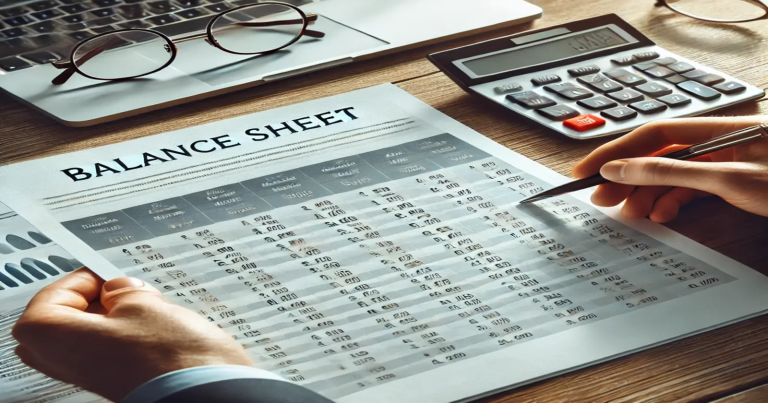When you look at a company’s intangible assets balance sheet, you will see more than just money or property. It also shows the value of non-physical things. These include ideas, rights, and branding. These are called intangible assets. They do not have a physical form like land or equipment. But they are still important to a company’s value. They help grow business, bring in more customers, and make the company stand out from others.So, what are intangible assets on a balance sheet? These are assets like trademarks, patents, brand names, and software. These things can bring long-term value. But they are not something you can touch or see. You still need to record them clearly in financial statements. These assets often come after current assets and tangible fixed assets on a balance sheet. Companies must follow strict rules when they show these values in their reports.
What are Intangible Assets Balance Sheet?
Every company has some assets that are not physical. These are called intangible assets. These assets still bring value. In the intangible assets balance sheet, companies include these assets just like they include buildings and machines. But these assets need more attention when valuing and recording them.
Some common types of intangible assets include:
- Goodwill: This is the extra value a company gets when it is bought for more than its net worth.
- Patents: Legal rights that protect inventions.
- Copyrights: Rights that protect written work, music, or art.
- Trademarks: Names or symbols that make a brand different from others.
- Franchises: Rights to run a business using someone else’s brand.
- Software: Some software bought by companies is considered an asset.
These make up a key part of the list of intangible assets on the balance sheet.
Why are they Important?
These assets help companies grow. They give a strong brand image. They also help attract loyal customers. Even though they are invisible, they play a big part in business success. The balance sheet category intangible assets includes all these non-physical assets that give long-term value.
How to Record Intangible Assets on the Balance Sheet?
You cannot record all ideas or thoughts as assets. Only some intangible assets can go on the balance sheet. You need to follow the rules. These rules make sure companies don’t overstate their value.Following are the recognition rules:
- You can record only those intangible assets that have a cost.
- Internally developed brands or goodwill are usually not recorded.
- Assets must give future economic benefits.
- You must measure the cost reliably.
Let’s take an example. If you buy a patent for ₹10 lakh, you can record that. But if you create a brand name on your own, you don’t show it in the intangible assets balance sheet.
| Type of Intangible Asset | Purchased | Created Internally | Can It Be Recorded? |
| Trademark | Yes | No | Yes (if bought) |
| Patent | Yes | Yes | Yes |
| Goodwill | Yes | No | Yes (on acquisition) |
| Brand Value | No | Yes | No |
This table helps explain how to record intangible assets on the balance sheet. Only purchased or clearly valued items are allowed.
Where Are Intangible Assets Listed on the Balance Sheet?
You will find them under the “Non-Current Assets” section. Sometimes, they are grouped with “Fixed Assets” and labeled as “Intangible Fixed Assets in Balance Sheets.”
You will usually find this order in the asset section:
- Current Assets
- Property, Plant & Equipment (Tangible Assets)
- Intangible Assets
- Other Non-Current Assets
This format helps investors understand what value the company holds in ideas, tech, and rights.
Examples from Real Companies
Let’s say Company A has a balance sheet. Under assets, it lists:
- Land: ₹5 crore
- Equipment: ₹2 crore
- Software license: ₹50 lakh
- Patent: ₹1 crore
The last two items fall under intangible assets. They come after physical assets but before deferred tax or long-term investments.
How Should Intangible Assets Be Disclosed on the Balance Sheet?
Companies must show intangible assets clearly. Transparency builds trust. It also helps investors make better decisions.According to accounting standards,as per the disclosure rules and format, companies must:
- Show the original cost
- Show amortization or depreciation value
- Show the net book value
- Explain the useful life of each asset
This helps understand the real value left in these assets.
Example: If a company has a patent worth ₹1 crore and it has used ₹20 lakh of its value, the balance sheet should show:
- Patent (Cost): ₹1 crore
- Less: Amortization: ₹20 lakh
- Net Value: ₹80 lakh
How to Calculate Intangible Assets Balance Sheet Value
Intangible assets balance sheet value is calculated using a very simple formula where cost is reduced by the amortisation. The value arrived at after using this formula is the amount of intangible assets to be recorded in the balance sheet at that date.
The formula is:
| Intangible Assets (Net) = Original Cost – Amortisation (Till Date) |
Example: Let’s say:
- You bought software for ₹10 lakh.
- You plan to use it for 5 years.
- You use straight-line amortization.
Each year you reduce ₹2 lakh from its value. So in year 3:
- Original cost = ₹10 lakh
- Amortization = ₹6 lakh
- Net Value = ₹4 lakh
Relevance to ACCA Syllabus
Intangible assets are an essential part of the Financial Reporting (FR) and Strategic Business Reporting (SBR) papers in the ACCA syllabus. Students must understand how intangible assets are recognized, measured, amortized, and disclosed under IAS 38 – Intangible Assets. Mastery of these topics is necessary for interpreting financial statements and making informed judgments in audits and valuations.
Intangible Assets Balance Sheet ACCA Question
Q1: Under IAS 38, which of the following conditions must be met for an intangible asset to be recognized?
A) It must be internally generated only
B) Its cost can be measured reliably and future benefits are probable
C) It must be visible or tangible
D) It must be included in equity
Answer: B) Its cost can be measured reliably and future benefits are probable
Q2: Which financial statement includes intangible assets like patents and trademarks?
A) Income Statement
B) Cash Flow Statement
C) Statement of Financial Position
D) Notes to the Accounts
Answer: C) Statement of Financial Position
Q3: How should an intangible asset be initially measured according to IFRS?
A) Fair market value
B) Nominal value
C) Historical cost
D) Net realizable value
Answer: C) Historical cost
Q4: Which of the following is not an example of an intangible asset?
A) Franchise rights
B) Internally developed brand
C) Acquired patent
D) Copyrights
Answer: B) Internally developed brand
Relevance to US CMA Syllabus
For CMA (Certified Management Accountant), understanding intangible assets is vital in Financial Reporting, Planning, and Performance. These concepts relate to long-term asset management, decision-making, and valuation techniques used in strategic finance roles.
Intangible Assets Balance Sheet CMA Question
Q1: Where should intangible assets appear in a classified balance sheet?
A) Current assets
B) Fixed liabilities
C) Non-current assets
D) Current liabilities
Answer: C) Non-current assets
Q2: Which of the following should not be capitalized as an intangible asset?
A) Software purchased for ₹2 lakh
B) Patent acquired for ₹5 lakh
C) Advertising expense to build brand
D) Trademark purchase
Answer: C) Advertising expense to build brand
Q3: What accounting treatment is applied to intangible assets with definite lives?
A) Depreciation
B) Amortization
C) Impairment only
D) Revaluation
Answer: B) Amortization
Q4: An intangible asset is considered impaired when:
A) Its carrying amount is greater than its recoverable amount
B) Its market value has increased
C) It is fully amortized
D) It has been sold
Answer: A) Its carrying amount is greater than its recoverable amount
Relevance to US CPA Syllabus
The US CPA exam tests intangible assets in the Financial Accounting and Reporting (FAR) section. Candidates must apply US GAAP and IFRS concepts related to the acquisition, amortization, impairment, and disclosure of intangible assets in the balance sheet.
Intangible Assets Balance Sheet CPA Question
Q1: According to US GAAP, which of the following intangible assets is subject to amortization?
A) Goodwill
B) Indefinite-life trademark
C) Definite-life license
D) Brand name
Answer: C) Definite-life license
Q2: How are acquired intangible assets reported on the balance sheet?
A) At current market value
B) At revaluation surplus
C) At cost less accumulated amortization
D) At replacement value
Answer: C) At cost less accumulated amortization
Q3: Which type of intangible asset is not amortized?
A) Customer list
B) Patent with 10 years life
C) Trademark with indefinite life
D) Copyright with 20 years useful life
Answer: C) Trademark with indefinite life
Q4: What financial statement shows accumulated amortization for intangible assets?
A) Cash Flow Statement
B) Balance Sheet
C) Income Statement
D) Statement of Changes in Equity
Answer: B) Balance Sheet
Relevance to CFA Syllabus
In the CFA Level I and II, students explore intangible assets in the Financial Reporting and Analysis segment. The curriculum emphasizes the differences between IFRS and US GAAP in recognizing, measuring, and analyzing intangible assets and their effects on valuation.
CFA-Based MCQs
Q1: Under IFRS, internally developed goodwill should be:
A) Recorded as an asset
B) Disclosed in notes
C) Expensed when incurred
D) Capitalized
Answer: C) Expensed when incurred
Q2: Which of the following impacts the valuation of a firm using the balance sheet method?
A) Unrealized gains only
B) Intangible assets not recorded
C) Current liabilities
D) Deferred revenue
Answer: B) Intangible assets not recorded
Q3: Which ratio would be most impacted by capitalizing vs. expensing intangible assets?
A) Debt-to-equity ratio
B) Return on equity
C) Gross profit margin
D) Inventory turnover
Answer: B) Return on equity
Q4: What is the effect of capitalizing development costs on future financial statements?
A) Decreases net income
B) Increases current period expenses
C) Increases assets and future expenses
D) Has no effect
Answer: C) Increases assets and future expenses


